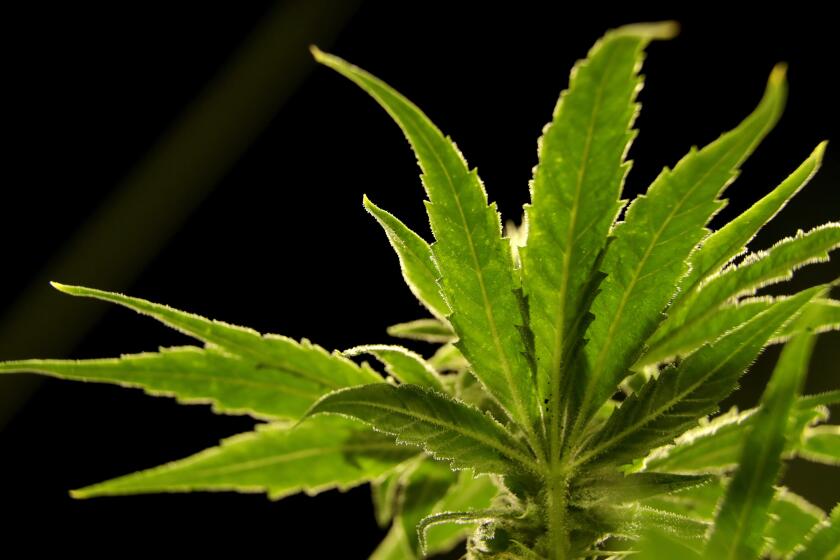Phase-Out of CFCs Poses Challenge to Chemical Industry
The decision by Du Pont Co. to push for the end of chlorofluorocarbons puts the giant chemical company in a high-risk race against time that could affect hundreds of other manufacturers and, ultimately, the consumer. CFCs, as they’re called for short, are used in everything from refrigerators and advanced electronics to foam food trays.
According to company officials, alternatives for key uses of CFCs--primarily in refrigeration--are at least five years away. Du Pont is considered the leader in developing substitutes, but the company faces intense competition from chemical companies in other nations, including Japan, which are also working to concoct compounds that will match CFCs’ usefulness without endangering the ozone layer.
At stake is a $2.7-billion-a-year market, now dominated by Du Pont, for the non-flammable, nontoxic compounds that have cooled the world for more than four decades.
Du Pont, which called for a total phase-out of CFCs to prevent destruction of the earth’s protective ozone layer, is relying heavily on a product that it says could replace CFC 11 and CFC 12, the compounds that are used most heavily in refrigeration and in mobile air-conditioning units.
The new compound, called 134a, contains no chlorine, the element that reacts with and destroys ozone, and can be substituted directly for other CFCs in many products.
Allied-Signal Inc., the second-largest domestic producer of CFCs, also is testing alternatives to CFCs 11 and 12.
But before either product goes on the market, it must pass health and environmental safety tests that both companies expect to take at least five years and possibly longer.
“It (134a) looks good and we’re optimistic,” said environmental manager Joseph Steed. “But there aren’t any guarantees. You can make a slight change in these compounds and get a greatly different degree of toxicity.”
The risks are real. According to Steed, the company recently put a promising substitute for CFC-based electronics solvent into safety tests, only to find that the new chemical was highly toxic to laboratory animals.
“We didn’t even get all the way through the two-year test,” he said. “The biologists said, ‘We’ll finish the test, but you better not count on this compound.’ ”
If its compound fails the tests, Du Pont may well have to go back to the drawing board--and possibly lose its edge in the market to compounds developed by other companies.
Meanwhile, manufacturers that use CFC compounds in their products are standing by a trifle nervously.
“It wouldn’t be such a problem as long as we can be assured something will be available in commercial quantities,” said Marian Stamos, spokesman for the Assn. of Home Appliance Manufacturers, which represents makers of refrigerators and freezers.
CFCs were used in all of the 8.2 million refrigerators and freezers produced in the United States last year, and appliance manufacturers were already concerned about the 50% cutback required in an international ozone agreement signed by 31 nations in 1987.
The problem, she said, is that Congress also enacted legislation last year to increase energy efficiency of home appliances--a requirement that the industry had expected to meet by using better CFC-based insulation in its products.
Manufacturers are considering design changes to promote efficiency, possibly replacing CFCs with other insulating materials. For the refrigerant, however, the industry is pinning its hopes on Du Pont.
Home air conditioners use CFC 22, a compound that contains little chlorine and is considered less of a threat to the ozone. But mobile air conditioning, from the family station wagon to the trucks that carry produce from coast to coast, depends heavily on CFCs 11 and 12.
Recycling a Possibility
Bob McFadden, senior policy analyst for the Motor Vehicle Manufacturers Assn., said the industry can tolerate an “orderly” phase-out of CFCs that allows time for alternatives to be developed. But a quick phase-out could create problems for owners of older cars, he said.
Car shops already have begun looking at the possibility of recycling CFCs, which are now so inexpensive that mechanics routinely vent residual gas into the air when recharging air-conditioning systems.
More to Read
Start your day right
Sign up for Essential California for news, features and recommendations from the L.A. Times and beyond in your inbox six days a week.
You may occasionally receive promotional content from the Los Angeles Times.






